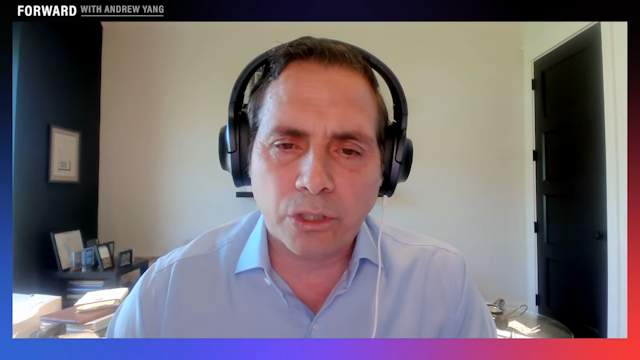Green Energy: The Future is Now

As the Green Party candidate for Congress in upstate NY District 21, when I describe the threats of global warming and the urgent need for an electric grid and national economy based on clean, renewable energy, I always hear the same three challenges:
- “Green energy is a pipedream that can’t power anything larger than a flashlight.”
- “Solar electric power is subsidized by the government and could not survive in a free market.”
- “I don’t believe in climate change, so what’s the big deal?”
Here are my go-to responses:
1. Green Electricity Worldwide
In America, the domination of the fossil fuel industry shapes public perceptions about climate change and overwhelms national policies, mainstream media, and the opinions of most politicians in Washington, D.C.
Yet, even with this disproportionate influence of the fossil fuel industry, true progress toward a greener future is visible in local, state, regional and tribal efforts across our republic.
In the first two moths of 2018, 98% of all new electric capacity came from wind turbines or solar panels.
The governors of thirteen states and Puerto Rico have committed to honoring the Paris climate agreements. Nine states have goals to cut power plant carbon pollution by 30% by 2030. Many states are looking at environment-friendly improvements to local and regional mass transportation.
Although America currently generates only 17% of our energy with renewable sources, California and New York have stated goals of 50% of all electricity from renewables by 2030. Hawaii has a 100% goal by 2045. Sixty-five US cities have 100% clean energy goals and five (Kodiak Island, AK, Aspen, CO, Greensburg, KS, Rockport, MO, and Burlington, VT) already generate 100% of their energy use from clean, non-polluting, renewable energy sources.
The business case is clear: renewable energy is cheaper than fossil fuels. The operations and data centers of Google and Apple are powered by 100% renewable energy. Companies setting 100% renewable goals include General Motors, Nike, Ikea, Starbucks, Kohl’s and Whole Foods. Renewable energy alliances that pool the resources of small companies and small communities are embarking on shared pilots.
Despite proposed solar panel tariffs, the solar workforce increased by 25% in 2016 and the wind energy workforce increased 32% - making solar panel installer and wind turbine service technicians the two fastest growing jobs in America. The third fastest growing job is home health aides.
Outside America, the world’s electrical grids are rapidly transitioning to 100% clean, renewable energy. Housing, commercial buildings and transportation are not far behind. China, the United States and India are leading the way with most new capacity using clean energy sources, especially solar panels.
The International Energy Agency (IEA) predicts renewable energy will expand 43% by 2022. China reached its 2020 solar target last year. India’s new electric capacity is 90% solar and wind. Denmark expects to generate 69% of its energy from renewables; Ireland’s goal is 30% and Spain, Germany and the United Kingdom expect solar and wind power to 25% of each nation’s electric needs. For March 2018, Portugal produced 100% of the nation's electric needs from renewable sources.
For some audiences, I close with this: The Philadelphia Eagles football team powers all its operations 100% through solar and wind energy. With 11,108 solar panels and 14 wind turbines at Lincoln Financial Field, along with recycling, waste management and composting efforts, Lincoln Field is “off the grid” in terms of energy usage. To offset emissions from team travels, they have planted over 500 trees around the field. The “Go Green” Program began in 2003.
2. Subsidies and Supports
Tax incentives to install solar, wind and geothermal capacity have great visibility, though for many homeowners and small businesses the costs are still not yet within typical household budgets. The message of the fossil fuel industry is that subsidies for renewable energy distort the energy markets and are driving coal out of business.
Yet as I have learned in conversations with citizen environmentalist Michael LaCroix:
“Fossil fuels not renewable energy benefit the most from public and tax policy.”
Subsidies for renewable energy are direct: tax deductions from the federal government for solar, wind and geothermal installations. Subsidies and supports for fossil fuels are indirect, complicated and hidden in tax breaks and loopholes.
LaCroix pointed me toward a research report from Oil Change International that identified indirect subsidies and taxpayer dollars given to fossil fuel industries:
- Intangible drilling oil and gas tax deduction ($2.3 billion)
- Excess of percentage over cost depletion accounting ($1.5 billion)
- Master Limited Partnerships tax exemption ($1.6 billion)
- Last-in, first-out (LIFO) accounting ($1.7 billion)
- Lost royalties from onshore and offshore drilling tax credit ($1.2 billion)
- Low-cost leasing of coal-production in the Powder River Basin ($963 million).
The level playing field for renewable energy and fossil fuels is nowhere to be found with other restrictions limiting solar panel installations.
Wyldon Fishman, current president of the New York Solar Energy Society, has found some municipalities discourage solar electricity through unduly complicated permitting and inspection procedures. Further, solar installation companies must pay up to 25% higher worker compensation insurance because states, including New York, do not have a category for solar installers like they do for roofers and tree service companies.
Joan Rech, longtime political activist and environmentalist, is focusing on condominium and Home Owners Associations that prohibit solar installations, sometimes simply because solar panels “look bad.”
And all the while, pollution and damage to our water, air, soil and food accelerates. I believe only an independent and third party candidate who takes no campaign money from energy companies of all types can craft a tax and infrastructure plan that fairly serves We the People. The plan must include a realistic roadmap and timeline for transitioning workers and facilities to renewable energy – all within the context that we are out of time and must dramatically move towards the goal of 100% electric power from renewable sources.
3. Climate Change: Fake News or National Security Threat?
Co-writing the article Climate Change: How Two Opposing Views Found Common Ground with aeronautical engineer Cindy Peak meant talking through deep disagreements. About both the existence of climate change and the role of human activity.
We differ about both the existence of climate change and the role of human activity in global warming.
Our first agreement was essentially a shared vision. When we turned to agreements, we found many.: We are stewards of the shared planet on which we live and we should take good care of our home.
Despite our profound differences, our agreed upon actions and policies included:
- All people, corporations and governments should protect the environment and be responsible for the damage they inflict upon the earth.
- To help communities most at risk from extreme weather events and do more than just throw money at state budgets, we want to: improve building codes; harden transportation, energy, housing, health and other infrastructure systems; and allow emergency agencies to help real disaster victims solve real problems without bureaucracy or multiple sub-contractors, each taking profits.
- To reduce pollution, we seek to provide: safe and clean energy generation; improved waste removal; dramatic reductions in the number of accidents that pollute our air and water; and natural solutions such planting trees and vegetation.
Since the article was published, I have stopped debating climate change. I simply reference the above vision and list of actions.
I do feel greater urgency about transitioning to a 100% green, renewable electric grid and an immediate halt to people, corporations and governments putting poisons in our air, water, soil and food. I want measures to respond to the possibility that age-old bacteria and viruses are released with the thawing of the permafrost; and that disease-bearing mosquitoes will move north.
I now consider universal access to public health services to be a national security issue – though I firmly believe we must first transform the government-run Veterans Health Services and Indian Health Services into world-class healthcare systems – right now they are mostly horrifically negligent.
Conversations with Lance Clark have recently convinced me that climate change is also a military and national security crisis. Clark spent 32 years working on the humanitarian consequences of war and the early warning signs of conflicts in Somalia, Bosnia, Iraq and Rwanda, among other nations.
Clark believes climate change is weakening our military capabilities to defend our nation and making the world a more dangerous place by increasing the number and scale of conflicts and wars.
Since 2003, the Pentagon has acknowledged the impact of climate change on military readiness by tracking rising sea levels, warming air temperatures and melting Arctic ice – especially new coastline military bases and all Navy ports.
Clark’s descriptions of the ways in which climate change makes our world more violent and dangerous has been a smaller part of the public, military and intelligence community dialog. When droughts, crop failure, floods and famines drive people from their homes, climate change can be a “threat multiplier” that drives more war and conflict.
Clark’s concern is that we are ignoring the early warning signs of larger, more frequent conflicts and thus ignoring the need to curb climate change for defense and security reasons.
The current White House has increased pressure on Departments and agencies to eliminate or minimize references to climate change on agency websites. Clark adds:
“For the good of our country, our military must be free to speak fully and frankly about how climate change is threatening our national security. This includes speaking about both the threats to our military’s ability to defend our country, as well as how climate change is making the world a more dangerous place through increasing the level and likelihood of wars and conflicts.”
A Call to Action
For environmental, economic, health and national security reasons, and as a congressional candidate for NY-21, I call for a strong, thoughtful and coordinated strategic plan across all domains of government to address the issues of climate change with policies, programs, actions and more research. I support the Green Party's efforts to divest New York state pension funds of fossil fuel investments.
I call for a global ceasefire including the halt of drone attacks and U.S. bombs that contain white phosphorous, depleted uranium, and other toxins that pose immediate and long-term health and environmental damage.
I call for an honest and public discussion of our apparent inability to dispose of nuclear waste (both spent nuclear fuel and high-level nuclear waste). I call for more honesty and more attention to the increasing dangers we are bequeathing to our children and grandchildren. And I call for our military and intelligence leaders and experts to speak more freely about the threats climate change bring to our national security.
I learned a new phrase from some young students in Queensbury, New York a few weeks ago: “eco-anxiety.” Our children understand quite well the full range of environmental dangers we are leaving them. At the same Climate Reality Conference, I also learned a new concept: “radical hope.”
I am stubbornly hopeful we can change the destructive trajectory of our state and national policies. We have no other choice – we have run out of time. The future is now.
Photo Credit: Romolo Tavanl / shutterstock.com



